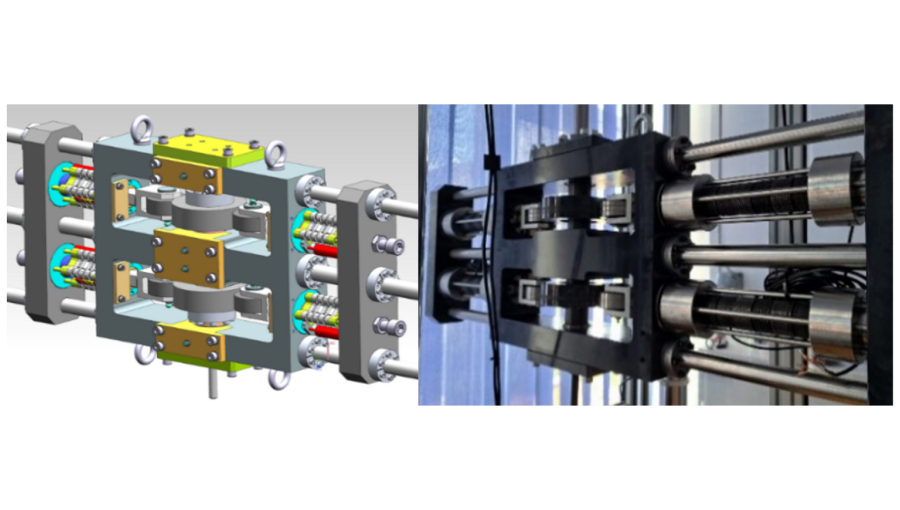Doc. dr. Jaka Tušek from UL FS recieves ERC funding to support his research on elastocaloric technology
Date of publication:
Dr. Jaka Tušek, Assistant Professor at the University of Ljubljana’s Faculty of Mechanical Engineering (UL FS), and his research team are developing elastocaloric cooling and heating technology. The ground-breaking research carried out under the ERC Starting Grant (StG) as part of the SUPERCOOL project has been rewarded with a successful application for an ERC Proof-of-Concept (PoC) Grant with the E-CO-HEAT project, providing support for the innovation potential of research achievements. This makes Tušek the sixth ERC researcher in Slovenia, and the second at UL FS, to receive additional support to develop the innovative potential of his research. The E-CO-HEAT project will be based on the elastocaloric device developed in the SUPERCOOL project, which was the first in the world to demonstrate sustained dynamic performance and record-breaking cooling and heating characteristics, and whose specific characteristics exceed all caloric cooling devices built to date. The ERC PoC funding will enable the technology to be further developed and, together with the relevant business strategy and intellectual property, to be transferred into everyday use.
As part of his SUPERCOOL ERC research project, Dr. Jaka Tušek and his team are exploring fundamental aspects of elastocaloric cooling and heating technology – a technology that could significantly reduce environmental pollution compared to existing devices.
Cooling, air conditioning and heating are essential for modern society. While global demand for cooling and efficient heating has grown exponentially over the last decade, our standard vapour-compression cooling and heat extraction technology is old, relatively inefficient and still makes use of environmentally harmful coolants. Vapour-compression cooling technology is therefore a major contributor to the greenhouse effect. “Ironically, the more we cool ourselves, the greater our cooling needs are. The International Energy Agency estimates that the number of air conditioners worldwide will rise from 1.6 billion today to 5.6 billion by the middle of the century. At such a rate of increase the energy used for cooling will overtake the total energy use for heating in 2060, and will exceed it by more than 60% by the end of the century. Alternative technologies that have shown great potential in recent years include elastocaloric cooling and heating, which is based on harnessing the elastocaloric effect during the cyclic loading of shape-memory materials,” Dr Tušek explained.
The ERC PoC project, acronymed E-CO-HEAT, will run for a year and a half. It will build on the fundamental research on elastocaloric technology carried out under the ERC StG SUPERCOOL project, which was completed at the end of last year. Based on this research, the researchers have developed a prototype elastocaloric regenerative cooling and heating device that is fatigue-resistant and achieves 100 W of heating/cooling power and a 30 K temperature range. In the first part of the newly acquired EUR 150,000 project, researchers will develop a prototype that will be upgraded with more efficient elastocaloric materials and then tested in real industrial conditions. “Together with the patent protection for the most innovative solutions of the developed prototype, these improvements will form the basis for the first steps towards commercialising elastocaloric technology and bringing it closer to the market,” said Dr. Jaka Tušek.


